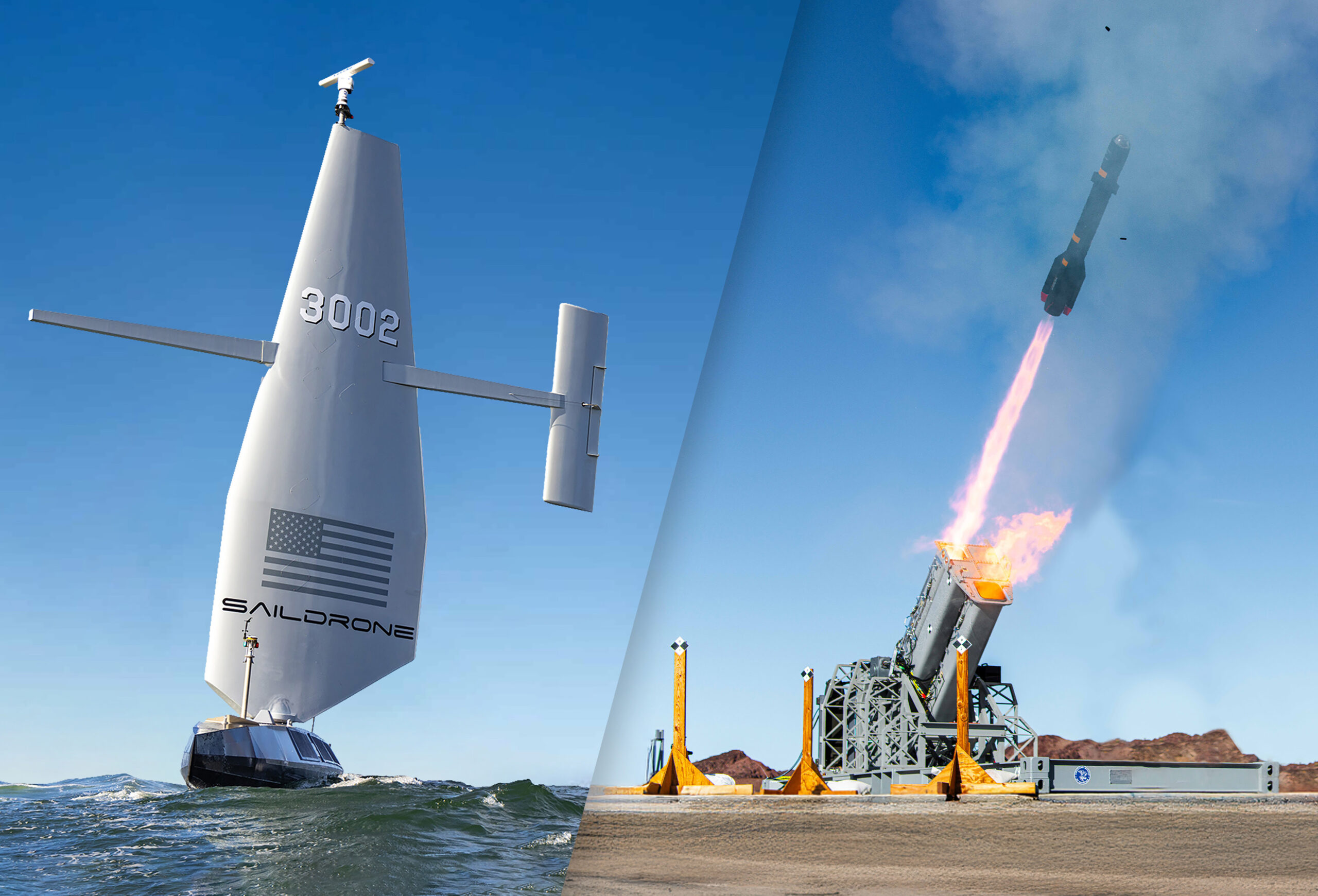Copyright Breaking Defense

WASHINGTON — Lockheed Martin plans to invest $50 million into California-based maritime drone manufacturer Saildrone, with the goal of equipping Lockheed’s air-to-ground missile launchers onto a Saildrone unmanned surface vessel, the companies announced today. “Work will begin immediately, applying an open architecture approach along with secure command and control capability to integrate Lockheed Martin’s JAGM Quad Launcher (JQL) system onto the Saildrone Surveyor platform,” according to a Lockheed statement. “Larger Saildrone vehicles are already in development to support significantly larger payloads and capabilities to include the Lockheed Martin Mk70 VLS launcher and thin line towed arrays.” Live fire demonstrations are expected in 2026, the announcement added. The arrangement pairs Lockheed’s missile launchers, which are ubiquitous throughout the Navy’s fleet, with Saildrone’s autonomous maritime drones, which have historically focused on unclassified surveillance missions. “Together, we are combining the most sophisticated commercial and defense technologies to deliver a lethal naval solution at speed and scale. The nation needs this capability to maintain dominance over our adversaries, and we will deliver it,” said Stephanie Hill, president of Lockheed’s rotary and mission systems business. The announcement is particularly significant for Saildrone, a relatively small startup that, up until 2020, mostly worked with civilian agencies, but has become increasingly prolific with the Navy and Coast Guard since first participating in the Rim of the Pacific Exercise in 2020 and Task Force 59 in 2021. This is “transformational for us,” Saildrone CEO Richard Jenkins told Breaking Defense in an interview today. “This is a fundamental repositioning of our capability for much heavier impact [and] much heavier firepower for larger ship needs.” In his own message announcing Lockheed’s investment, Jenkins said he had first unsuccessfully attempted to pitch the Navy in 2014. That he had better luck in the early 2020s was likely not just serendipity: Since 2019, the service has heavily leaned into the idea of building a hybrid fleet, consisting both of traditional warships and teaming them with unmanned surface and subsurface vessels of varying sizes. RELATED: ‘Be Uncomfortable’: Navy Wants New USV To Challenge The ‘Status Quo’ In parallel to the Navy’s activities, Saildrone in many ways has leaned into doing business with the Pentagon despite its history with research and civilian institutions, recruiting a former chairman of the Joint Chiefs of Staff as the head of its board, and a retired three-star admiral as its president. Jenkins said the company has always viewed defense as its biggest use case, but “the world was a very different place back in 2014…I think it wasn’t the right time back then.” Saildrone’s work in oceanography and weather forecasting was a valuable opportunity to hone the company’s technology, he added, but the potential for growth in that sector is much lower than the defense industry. From an engineering standpoint, Jenkins said physically integrating a missile launcher onto Saildrone’s platform won’t be a heavy lift. The bigger challenge will be back end work associated with the command and control of a kinetic weapon. “Lockheed is one of the only firms that actually has the key to the entire architecture to be able to … see Saildrone’s [intelligence data] on the bridge of a destroyer, or in a command center, in an encrypted, secure way, and then be able to take direct control of the effectors on board the vehicle to create an effect,” he said. For now, the work to combine the company’s technologies remains independent research and development — meaning the Pentagon has no stake in the outcome. “This is entirely self-funded, and it will happen,” Jenkins added.



